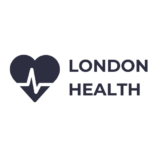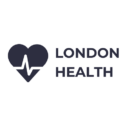Antibiotics are used to treat infections and illnesses that care caused by bacteria; antibiotics are available on prescription and are used to treat a variety of common infections.
What are antibiotics used for?
Antibiotics are used to treat a number of very common illnesses and infections; these include:
- Tonsillitis
- Impetigo (a very common skin condition)
- Sexually transmitted infections
- Salmonella
- Pneumonia
Antibiotics cannot be used to treat viral infections such as the common cold, influenza and mumps.
Types of antibiotic
Antibiotics are classified as broad-spectrum or narrow-spectrum; this refers to the range of bacteria that they can treat. Broad-spectrum antibiotics can be used to treat several different types of bacterial infection, while narrow-spectrum antibiotics target specific types of bacteria. Common types of broad-spectrum antibiotics include amoxicillin and cefotaxime; common examples of narrow-spectrum antibiotics include vancomycin and teicoplanin.
How do antibiotics work?
Different types of antibiotic work in different ways; some attack and kill bacteria and some prevent the bacteria from reproducing. Antibiotics that kill bacteria are known as bactericidal (penicillin is a well-known example of this kind of antibiotic) and those that stop growth and reproduction are known as bacteriostatic (erythromycin is a well-known example of this type of antibiotic).
Are antibiotics safe for everyone?
Most people can take antibiotics, but they may not be suitable for certain people; antibiotics are only available on prescription so your doctor will discuss your medication with you; it is important to tell your doctor if you have experienced an allergic reaction to an antibiotic in the past. People with liver or kidney problems may be advised to try alternative treatment.
Taking antibiotics
It is very important that you finish the course of antibiotics you are given, even if you start to feel better long before the course finishes; if you stop in the middle of the course, this can be counter-productive. It is important to discuss any other medications you are taking with your doctor as antibiotics may cause these medications to function less effectively. You should avoid drinking when you are on antibiotics. Some antibiotics should be taken before food and some should be taken after; read the label carefully and ask your doctor or pharmacist if you have any questions about your medication.
Are there any side-effects?
Like all medications, there are some possible side-effects of antibiotics; these include:
- Nausea
- Vomiting
- Diarrhoea
Some broad-spectrum antibiotics may also cause fungal infections such as thrush.
Occasionally people suffer from allergies to antibiotics; this commonly causes a rash, swelling of the tongue and itchy skin but it can cause very serious effects including breathing difficulties; this is known as an anaphylactic shock; this should always be treated as a medical emergency.

